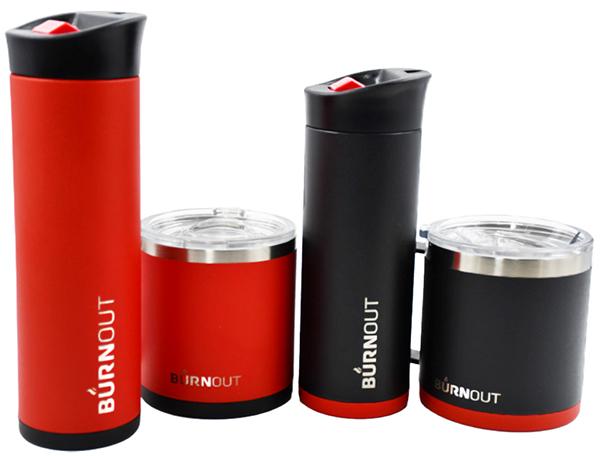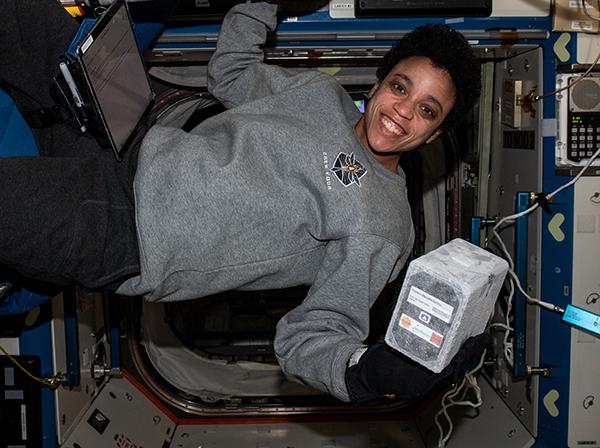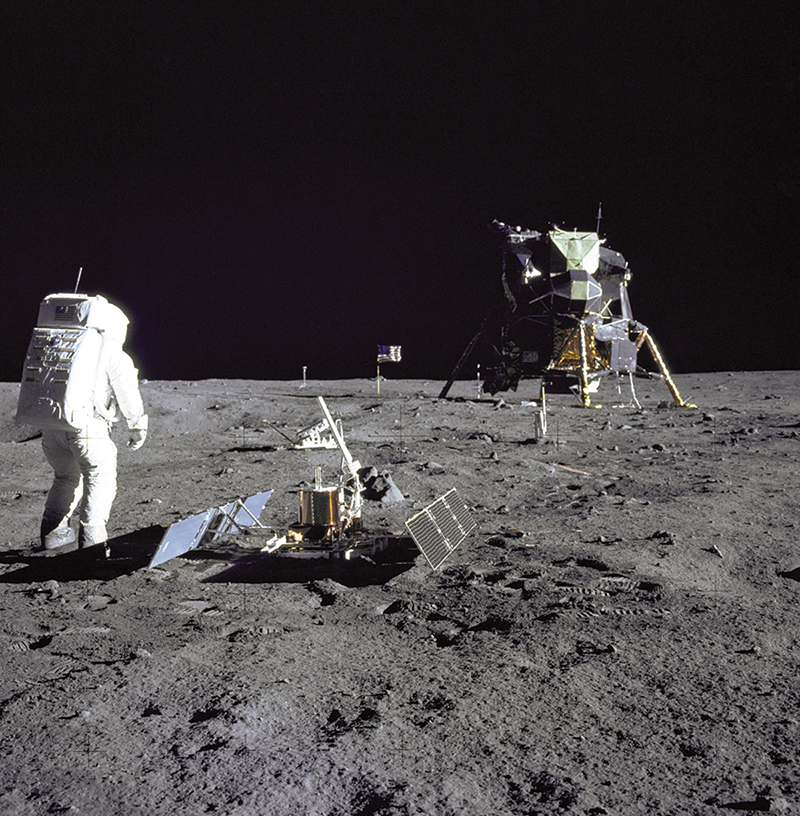
Do-It-Yourself Additives Recharge Auto Air Conditioning
Originating Technology/NASA Contribution
Even though it drops to -279 °F at night and dips to -400 °F inside its deepest craters, the Moon can reach a scorching 260 °F during the day. The range of temperatures is extreme—in part because there is no substantial atmosphere on the Moon to insulate against the heat or cold. What the Moon does have are small amounts of gasses above its surface, sometimes called a lunar atmosphere or exosphere, that consist mostly of hydrogen and helium, along with some neon and argon.
On Earth, traces of an atmosphere extend as high as 370 miles above the surface. Made of 78-percent nitrogen and 21-percent oxygen, 1 percent of Earth’s atmosphere consists of argon and other gasses—some of which help to trap heat from the Sun and create a greenhouse effect. Without this effect, Earth would probably be too cold for life to exist. Another helpful feature of the Earth’s atmosphere exists about 30 miles above the surface, where ultraviolet light from the Sun strikes oxygen molecules to create a gas called ozone. This ozone blocks harmful ultraviolet rays from reaching the Earth.
While the Earth’s atmosphere protects and defends against extreme temperatures like those on the Moon, Earth’s heating and air conditioning systems create an even more comfortable atmosphere indoors. In planning for a return mission to the Moon, NASA aimed to improve the thermal control systems that keep astronauts comfortable and cool while inside a spacecraft.
Partnership
In the late 1990s, Goddard Space Flight Center awarded a Small Business Innovation Research (SBIR) contract to Mainstream Engineering Corporation, of Rockledge, Florida, to develop a chemical/mechanical heat pump as part of the
spacecraft’s thermal control system. Designed to transfer heat from one location to another, a heat pump provides cooling by moving heat out of one area and into another. While working on the heat pump design at Goddard, Mainstream Engineering came up with a unique liquid additive called QwikBoost to enhance the performance of the advanced heat pump design.
Previously featured in Spinoff 1999, QwikBoost circulates through a system like a lubricant, working to boost the available cooling capacity. This increases the performance of the system and results in faster heat transfer (cooling) and consumption of less operating energy.
After Mainstream Engineering patented the QwikBoost technology developed with NASA, it started manufacturing and selling the additive to improve the operating efficiency and economy of refrigeration systems, air conditioners, and heat pumps. NASA used QwikBoost to develop more efficient, smaller, and lighter cooling systems, as well as in air conditioning and refrigeration systems at NASA facilities, and in air conditioning systems in NASA’s vehicle fleet.
Recognizing the capabilities of QwikBoost, a New York-based company, Interdynamics Inc., exclusively licensed the additive from Mainstream Engineering in 2004. As a developer of do-it-yourself air conditioning recharger kits, Interdynamics soon merged with EF Products Inc., of Dallas, Texas, a provider of closed system retrofit kits for automotive air conditioning systems, to become IDQ Inc., of Garland, Texas, with sales and marketing out of Tarrytown, New York. Today, IDQ incorporates the NASA-derived QwikBoost technology into its line of Arctic Freeze products.
According to the company, by using Arctic Freeze to replace lost refrigerant and oil in an automotive air conditioning system, the NASA-derived QwikBoost chemistry provides colder air up to 50-percent faster than a conventional R-134a refrigerant product. “Working with NASA technology bolsters our confidence that the chemistry has been thoroughly tested and proven to deliver the benefits and results promised,” says Vincent Carrubba, director of research and development at IDQ.
Product Outcome
IDQ provides a variety of automotive air conditioning products for the do-it-yourself consumer and professional service technician, including its line of Arctic Freeze products. Sold at leading automotive and mass-retail stores and through wholesale distributors in the aftermarket industry in the United States, Europe, and Latin America, Arctic Freeze restores cooling in a vehicle’s air conditioning system once the system is no longer cooling effectively or when the performance has degraded to blowing only warm air. The product replenishes a system with R-134a containing the QwikBoost synthetic refrigerant enhancer.
Compared to operating with only PAG-oil (a lubricant), the addition of QwikBoost reduces wear and tear on the system by lowering compressor temperatures and extending the useful life of the lubricant. Arctic Freeze also incorporates a system-safe leak sealer that conditions rubber o-rings, seals and hoses, which are the primary source of minor system leaks.
In addition to delivering low vent temperatures, Arctic Freeze also delivers low costs. Depending on which Arctic Freeze product a customer uses, recharging an automotive air conditioning system can cost approximately $15–$30, compared to $100 or more at an automotive repair shop. Each Arctic Freeze product provides do-it-yourself customers with everything needed to recharge a vehicle air conditioning unit.
Carrubba believes NASA technology has made a world of difference by providing a demonstrable and affordable solution to improve the efficiency and economy of operating air conditioning and refrigeration systems here on Earth. “The all-in-one solutions of Arctic Freeze make it possible for nearly anyone to safely, effectively, and affordably recharge their own vehicle’s air conditioning unit.”
QwikBoost™ is a trademark of Mainstream Engineering Corporation.
Arctic Freeze® is a registered trademark of IDQ Inc.
performance of the advanced heat pump design.
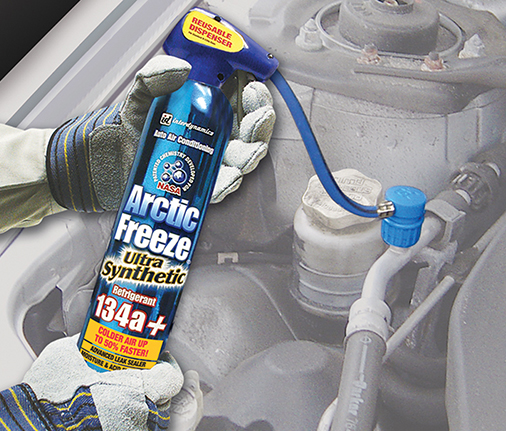
IDQ Inc.’s Arctic Freeze-1 product recharges the air conditioning in most passenger automobiles manufactured after 1995. It comes with step-by-step instructions, a built-in reusable installation hose, snap-on coupler, and air conditioning pressure gauge.
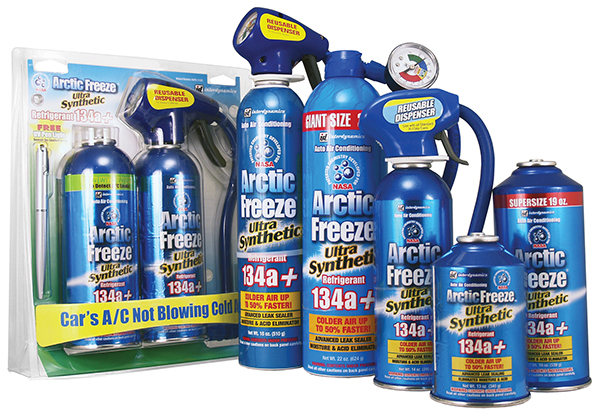
The full line of Arctic Freeze products incorporates a QwikBoost refrigerant enhancer originally developed by NASA and Mainstream Engineering Corporation, of Rockledge, Florida. According to IDQ, QwikBoost provides vehicle owners with colder air up to 50-percent faster than a conventional refrigerant product.

In planning for a return mission to the Moon, NASA sought to improve the thermal control systems that keep astronauts comfortable while inside a spacecraft like the Lunar Module “Eagle,” shown here on the far right.












